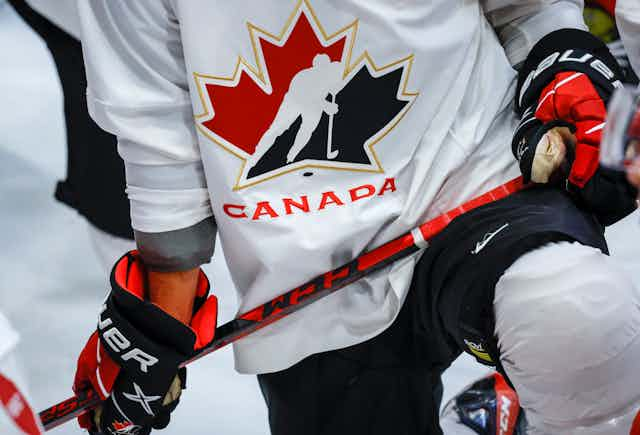It is heartening to see the recent open letter signed by so many Canadian academics calling on the federal government to address the long history of athlete abuse in sport.
The abuse of athletes has remained mostly unseen or ignored by governments, sport organizations and the public despite more than 40 years of documentation and research.
The letter called for a judicial inquiry, but we believe there are more effective ways to address athlete maltreatment. In a recent brief to two parliamentary standing committees we wrote:
“Given the wealth of relevant research available on Canadian athletes’ experiences, including the nature, prevalence, and effects of maltreatment, we do not believe a judicial inquiry is necessary to recommend solutions.”
Why a judicial inquiry isn’t the right approach
Judicial inquiries are mandated to investigate issues and make recommendations for change. Their recommendations are often implemented selectively or ignored, leaving reports to gather dust on a shelf.
The 1990 Dubin Inquiry recommended, among other things, ending the win-at-all-costs approach to sport. If that recommendation was implemented, it could have prevented much of the abuse that has occurred in the last 30 years.
Judicial inquiries are led by appointed investigators in a top-down manner, likely removing focus from the voices of athlete survivors. They are expensive, tend to be prolonged as issues often proliferate and their adversarial tone has the potential to retraumatize witnesses.
Read more: The criminal justice system is retraumatizing victims of violent crime

Current knowledge of athlete maltreatment in sport is the result of decades of research. And the conclusions are remarkably consistent regarding prevalence, causes, effects and prevention strategies. A judicial inquiry is unlikely to add much to our current understanding of the problem.
Judicial inquiries investigate past harms to understand what happened and assign blame. Canadian researchers have mapped the attempts to address athlete abuse, outlined the failure of previous policies and developed the first recommendations for making adjudication of athlete abuse independent from sport organizations.
Research has exposed the systemic conditions of sport that give rise to athlete abuse, the lack of transparency and accountability in sport organizations and the often career-ending retaliation against athletes who dare to report their maltreatment.
Actions called for by Canadian national team athletes are currently being implemented. Their recommendation for a universal code of conduct produced the most comprehensive code anywhere, with compliance mandatory for all federally funded sport organizations.
Their call for an independent mechanism to investigate and adjudicate complaints now exists in the form of the Office of the Sport Integrity Commissioner (OSIC). Engagement with the OSIC is mandatory for all federally funded sport organizations. Other initiatives are in progress.
Read more: Addressing athlete abuse in Canadian sport requires internal change and external investigators
These actions are not perfect and progress has been slow. However, working to strengthen reforms already underway is preferable to starting over with a judicial inquiry.
Gaps are being addressed. For example, although OSIC only has jurisdiction over national level athletes, provinces and territories have committed to having an independent complaint mechanism in place by the end of 2023. The federal minister of sport is working toward harmonization, ensuring equal treatment for Canadian athletes across all jurisdictions.
A time-consuming and expensive judicial inquiry could bring the current momentum to a halt, permitting sport organizations to return to a status quo. Any delay would stall education, prevention and investigation measures, potentially allowing further harm to athletes. And there is no guarantee that future governments will act on the inquiry’s recommendations.
Alternative processes
Inquiries are intended, in part, to provide wronged parties the opportunity to be heard and receive reparations for the harms experienced. Survivors who wish to tell their stories should feel heard and supported as part of the healing process.
Restorative inquiries engage survivors in the development of the process. They provide a more accommodating, trauma-informed approach to meeting the needs of survivors.

Restorative processes focus on building trust and relationships and inquiries can occur in parallel with existing and developing reforms. They are driven by the question of how we deal with our past while building better sport; and they are solution-focused. Psychiatry scholar Judith Herman found that, “rather than punishment of perpetrators, survivors frequently prioritized prevention of future harms.”
Sport is the only institution in Canada where children do not have a protected status. The self-regulating nature of sport deprives child athletes of the protections recognized in education, health care, the justice system and the workplace.
Creating child protection legislation for young athletes will not address former harms. But it will establish age-appropriate laws to prevent future abuses and exclude children from the autonomy of sport.
Safe sport solutions must be empirically driven, validated by athletes and should involve age-appropriate legislation. Building a healthy future for Canadian athletes is an urgent matter that has gained national attention. Maintaining this momentum is essential.
Wendy MacGregor, an independent researcher and advocate, also co-authored this article.

